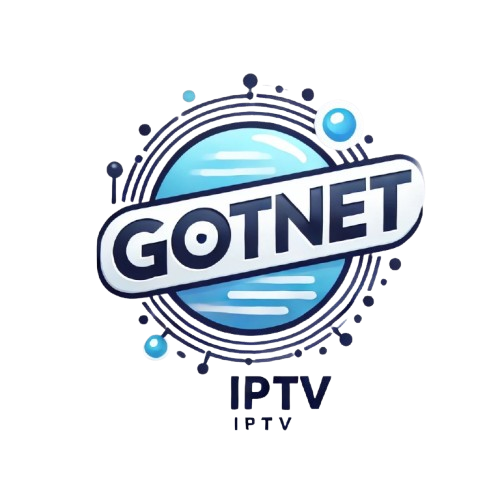GotNET
Effective Strategies to Prevent IPTV Buffering Problems
In today’s digital age, Internet Protocol Television (IPTV) has become a popular way to consume television content. However, one of the prevalent issues faced by users is buffering, which can severely disrupt the viewing experience. Buffering occurs when data is being downloaded at a slower rate than it is being played, resulting in interruptions that can frustrate even the most patient viewer. To tackle this challenge, it is important to understand its causes, make essential network adjustments, and adopt best practices that optimize the IPTV experience.
Understanding the Causes of IPTV Buffering Issues
Buffering in IPTV can stem from various factors, primarily related to bandwidth limitations. When multiple devices are connected to the same network, sharing the available bandwidth, the speed allocated to each device may become insufficient for seamless streaming. This is particularly noticeable in households where several users simultaneously engage in bandwidth-intensive activities, such as gaming or downloading large files. Additionally, the type of content being streamed can also impact buffer rates; high-definition content requires more bandwidth than standard definition.
Another common cause of buffering is network congestion. This can happen during peak hours when many users are online, leading to slower response times from Internet Service Providers (ISPs). Moreover, the physical distance from the IPTV server can impact streaming quality. The farther away a user is from the server, the longer it may take for data packets to travel, resulting in potential delays and increased buffering. Finally, outdated hardware, including routers or modems, may not be equipped to handle modern streaming demands, which further exacerbates the issue.
Lastly, poor Wi-Fi signals can significantly contribute to buffering problems. Walls, furniture, and even interference from other electronic devices can weaken the signal strength of a wireless network. Users may also encounter issues with their IPTV service provider, including server outages or maintenance periods, leading to temporary streaming interruptions. Understanding these causes is the first step towards implementing effective solutions to mitigate buffering problems.
Essential Network Adjustments to Enhance Streaming Quality
To combat buffering, one of the most effective strategies is to upgrade your internet plan. Higher-tier broadband plans typically offer increased bandwidth, allowing for smoother streaming, particularly for high-definition content. Users should assess their current needs and consider the number of devices connected to their network before selecting an appropriate plan. Many ISPs offer customizable packages that cater to different usage scenarios, making it easier to find one that meets streaming demands.
Another essential adjustment is the placement of your router. Positioning the router in a central location within your home can enhance the Wi-Fi signal strength and coverage area, reducing dead spots. If the router is located in a corner or behind large obstructions, the signal may not reach certain areas effectively. Additionally, using a dual-band router can improve performance by allowing users to connect to both 2.4 GHz and 5 GHz frequency bands, with the latter usually providing faster speeds over shorter distances.
Finally, using a wired Ethernet connection can provide a more stable and reliable streaming experience compared to Wi-Fi. By connecting devices directly to the router with Ethernet cables, users can eliminate the risks associated with Wi-Fi interference and signal degradation. This is particularly beneficial for devices that require high bandwidth, such as smart TVs, gaming consoles, or streaming devices. Implementing these network adjustments can significantly reduce buffering and enhance overall IPTV performance.
Best Practices for Optimizing Your IPTV Viewing Experience
To further optimize your IPTV viewing experience, it is crucial to regularly check for software updates on your streaming device and router. Keeping firmware up to date can improve performance and security, as manufacturers often release updates that enhance the functionality of their devices. Similarly, ensuring that the IPTV application is updated can also rectify any bugs that may lead to buffering issues, allowing for a smoother streaming experience.
In addition to software updates, users should consider clearing cache data regularly. Accumulated cache can cause applications to lag or misbehave, leading to disruptions during streaming. Clearing the cache allows the application to run more efficiently, potentially reducing buffering occurrences. Users should also monitor their background applications; unnecessary programs running simultaneously can consume valuable bandwidth, leading to streaming interruptions. Closing these applications can free up bandwidth for a more enjoyable viewing experience.
Lastly, taking note of the time when buffering occurs can be beneficial. If buffering happens consistently at certain times, it may indicate peak usage periods for your ISP. Consider scheduling your viewing during off-peak hours when fewer users are online, potentially leading to improved streaming speeds. By adopting these best practices, viewers can greatly enhance their IPTV experience and minimize the chances of encountering buffering problems.
In conclusion, tackling IPTV buffering issues requires a multifaceted approach that encompasses understanding the underlying causes, making essential network adjustments, and following best practices for optimization. By being aware of bandwidth limitations, network congestion, and signal strength, users can take proactive steps to prevent buffering. Implementing strategic upgrades and adjustments to their network infrastructure, along with maintaining their devices, will create a more seamless streaming experience. Ultimately, a little diligence in network management can lead to a significant enhancement in the enjoyment of IPTV services.
